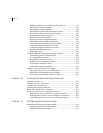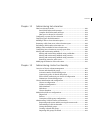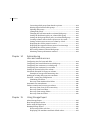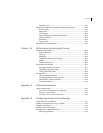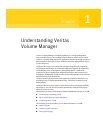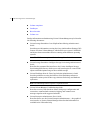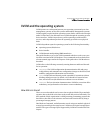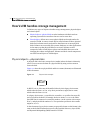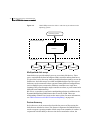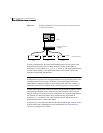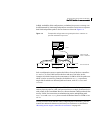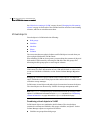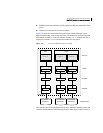
20 Understanding Veritas Volume Manager
How VxVM handles storage management
How VxVM handles storage management
VxVM uses two types of objects to handle storage management: physical objects
and virtual objects.
■ Physical objects—physical disks or other hardware with block and raw
operating system device interfaces that are used to store data.
■ Virtual objects—When one or more physical disks are brought under the
control of VxVM, it creates virtual objects called volumes on those physical
disks. Each volume records and retrieves data from one or more physical
disks. Volumes are accessed by file systems, databases, or other applications
in the same way that physical disks are accessed. Volumes are also
composed of other virtual objects (plexes and subdisks) that are used in
changing the volume configuration. Volumes and their virtual components
are called virtual objects or VxVM objects.
Physical objects—physical disks
A physical disk is the basic storage device (media) where the data is ultimately
stored. You can access the data on a physical disk by using a device name to
locate the disk.
Figure 1-1 shows how a physical disk and device name (devname) are illustrated
in this document.
Figure 1-1 Physical disk example
In HP-UX 11i v3, disks may be identified either by their legacy device name,
which takes the form c#t#d#, or by their persistent (or agile) device name,
which takes the form disk##.
In a legacy device name, c# specifies the controller, t# specifies the target ID,
and d# specifies the disk. For example, the device name c0t0d0 is the entire
hard disk that is connected to controller number 0 in the system, with a target
ID of 0, and physical disk number of 0. The equivalent persistent device name
might be disk33.
In this document, legacy device names are generally shown as this format is the
same as the default format that is used by the Dynamic Discovery Layer (DDL)
and Dynamic Multipathing (DMP) features of VxVM.
devname



